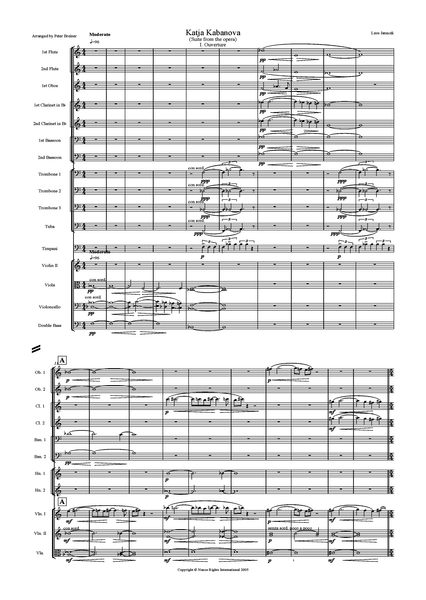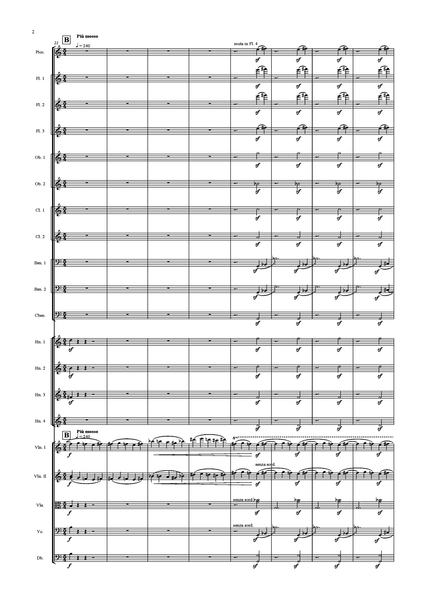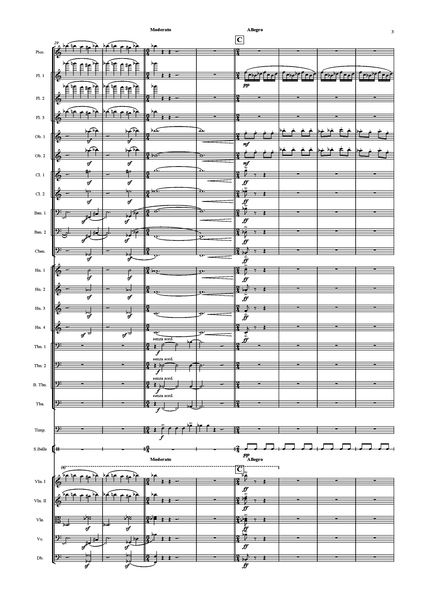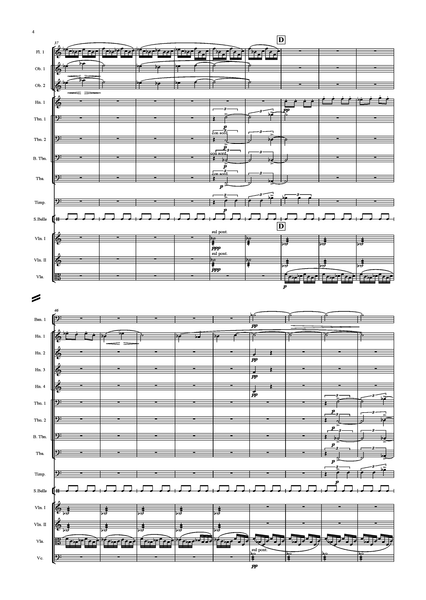Leoš Janáček: Kat'a Kabanova Suite – arranged by Peter Breiner (PB047)
Sheet music edition. Choose your format from the selection above.
133 pages
Duration: 38m
Instrumentation: 3+1, 2+1, 2+1, 2+1 - 4, 3, 3, 1 - timp + perc
Janáček was desperate to write a new opera after the hard-earned success of Jenůfa and so turned to the Russian dramatist Ostrovsky’s tragedy The Storm, the main protagonist of which is called Káťa. Like Puccini and Tchaikovsky before him – two composers he held in the highest regard – Janáček hoped to write a lyrical romantic tragedy about the plight of a young woman. Janáček turned immediately to Puccini’s opera Madama Butterfly for inspiration. The composer first saw the opera in Prague in 1908, but revisited it again in Brno in December 1919. Soon after seeing it afresh, he began writing Káťa Kabanová. Káťa’s story is certainly as tragic as that of Puccini’s geisha. Stuck in a provincial town, Káťa becomes worried that she will cheat on her husband Tichon. Despite her plea to him not to go to market, her harsh mother-in-law sends him on his way. In Tichon’s absence, Káťa starts a relationship with Boris. The weight of this sin is too much for her to bear and she throws herself into the Volga.
The suite begins with the bleak overture to the opera in the dark key of B flat minor. The ominous eight beats on the timpani seem to signify something oddly fatalistic, pitted against the aching harmonies in the rest of the orchestra. A second theme (itself derived from the timpani motif), accompanied by sleigh bells, prefigures Tichon’s departure for market. The second movement is taken from music of the action of act one, beginning with the interlude between the two scenes. Janáček repeats several motifs here, but uses the harmony to indicate a change in the psychological circumstances, with the meek Káťa pitted against her hateful surroundings. More convivial music – taken from Káťa’s scene with her adopted sister Varvara – hints at something more hopeful, but we are quickly moved on into Tichon’s departure and the return of the ominous fate motif pitted against the sleigh bells. The momentum builds and a searing theme appears in the high strings, underpinned by the brass and woodwind, as Tichon departs and the tragedy is put in motion.
A third movement takes us into the second act, and the preparations for Káťa’s meeting with Boris. The tension and passion mounts, describing the hot summer night on which Varvara and Kudrjáš, Káťa and Boris, have their brief moment of happiness. The fourth movement is largely given over to Kudrjáš’s teasing song about a spoiled girl who is constantly bought presents and to the touching melodies of their calls for Káťa and Boris to return home. The movement ends with the ecstatic close of the second act, a brief moment of passion in an otherwise bleak world.
The final movement concerns the storm proper, with the whirl of the cyclone spinning through the various sections of the orchestra. It was in Káťa Kabanová that Janáček really began to experiment with time, situating voices off stage and contracting and expanding timings for dramatic effect. As Káťa runs wildly off through the storm, we hear those distant echoes calling her toward her watery echo, all the time egged on by the defeatist timpani. After her outrageous confession, we find Káťa alone contemplating her fate, with her meek countenance coming through in the heartfelt music of her final meeting with Boris. It is another brief enclave of contentment and the suite ends with the staggeringly rapid death of Janáček’s ‘most beautiful and saddest’ of heroines. Her fate is sealed by one last blast from the timpani.
Audio Sample















